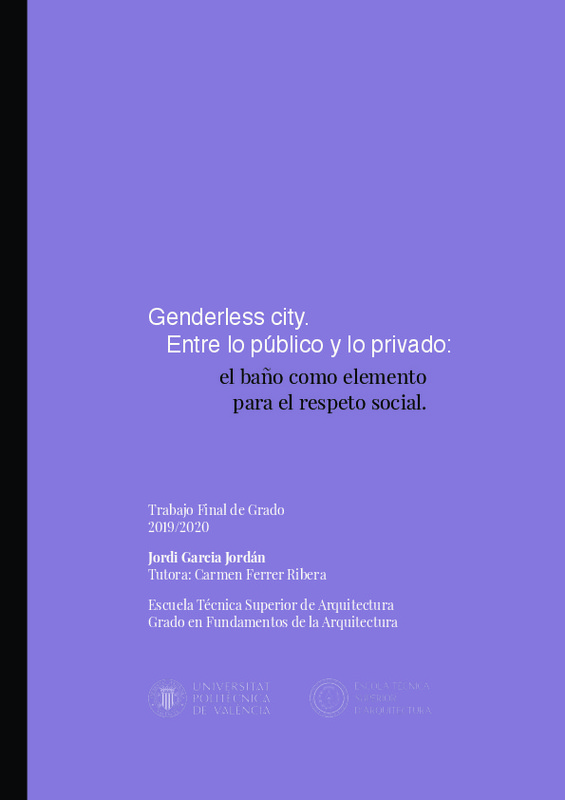JavaScript is disabled for your browser. Some features of this site may not work without it.
Buscar en RiuNet
Listar
Mi cuenta
Estadísticas
Ayuda RiuNet
Admin. UPV
Genderless city. Entre lo público y lo privado: el baño como elemento para el respeto social.
Mostrar el registro completo del ítem
Garcia Jordan, J. (2020). Genderless city. Entre lo público y lo privado: el baño como elemento para el respeto social. Universitat Politècnica de València. http://hdl.handle.net/10251/169484
Por favor, use este identificador para citar o enlazar este ítem: http://hdl.handle.net/10251/169484
Ficheros en el ítem
Metadatos del ítem
| Título: | Genderless city. Entre lo público y lo privado: el baño como elemento para el respeto social. | |||
| Autor: | Garcia Jordan, Jordi | |||
| Director(es): | ||||
| Fecha acto/lectura: |
|
|||
| Resumen: |
[ES] El cuarto de baño, desde sus orígenes hasta la actualidad, ha sido un espacio donde cualquier persona ha podido cuidarse y ser ella misma. Este lugar, además, ha estado estrechamente vinculado con los conceptos de ...[+]
[EN] The bathroom, from its origins to the present day, has been a space where everyone is able to take care of, and be, themselves. Moreover, it has always been closely linked with the concepts of intimacy and privacy. ...[+]
|
|||
| Palabras clave: |
|
|||
| Derechos de uso: | Reserva de todos los derechos | |||
| Editorial: |
|
|||
| Titulación: |
|
|||
| Tipo: |
|
recommendations
Este ítem aparece en la(s) siguiente(s) colección(ones)
-
ETSA - Trabajos académicos [4863]
Escuela Técnica Superior de Arquitectura







